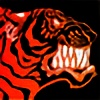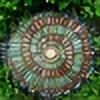HOME | DD
 SageKorppi — Feathered Dino Arm/Wing PSA
SageKorppi — Feathered Dino Arm/Wing PSA

Published: 2012-10-17 23:59:54 +0000 UTC; Views: 11719; Favourites: 320; Downloads: 69
Redirect to original
Description
A very common mistake I see in feathered dinosaur illustration, especially in things like Arhcaeopteryx and Microraptor is that the primaries are attached to some mystery structure and the hands are free from the wing. So here you go, I better not see any more hands poking out from the wrist joint of an Arhcaeopteryx's wing!




Related content
Comments: 34

Oh my gosh. Thank you SO MUCH. I can never figure out how to position raptor wrists. T_T
👍: 0 ⏩: 0

This should be helpful to me; I can never seem to make the wings look right, even when I attach them to the right finger.
👍: 0 ⏩: 0

helpful simple tutorials like this (atleast concerning those orionides) shud be at the dA front page!
👍: 0 ⏩: 0

Oldie but goldie. By any chance, have you already seen Elijah's takes on this matter?
[link] - [link] - [link]
👍: 0 ⏩: 1

Thank you, and indeed 
👍: 0 ⏩: 0

I am not exactly sure what it is, but there is something very amusing about this.
👍: 0 ⏩: 0

Spread the word! And I love that raven-signature!
👍: 0 ⏩: 0

Good guide! Thank you for making it!
Are there cases where the feathers only go as far as the first or second knuckle and leave the rest of the digit free, or do they always extend as far as the claw? Do we know?
I saw the links you posted in the other comment and they're really useful. Thanks!
👍: 1 ⏩: 2

I guess on dinosaurs where the feathers are clearly preserved they go all the way down the digit, to the base of the claw. You see this in emus as well. I suppose though, on species where it isn't as well preserved, you could use artistic license and have the feathers end at the first or second joint of the digit
👍: 1 ⏩: 0

That's a good question! I'll have to get back to you!
👍: 0 ⏩: 0

I totally have trouble drawing feathered dino arms, but not because I don't understand the concept of where feathers attach. More because I suck at dinosaur anatomy in general so my silly little dino limbs are all wrong. XD
👍: 0 ⏩: 0

Thank you so much! I was looking for this information forever, but I never found a source that was clear. 
👍: 0 ⏩: 0

Lol. "mystery structure" indeed. Very good point, though I confess I hadn't noticed it before.
👍: 0 ⏩: 0

I LOVE the bluntness of it, lol. This definitely needs to appear in all feathered dinosaur-related groups. Well, mine at least.
The mystery structure thing always confused me. It's amazing how much good a teensy little bit of cursory bird knowledge can do for paleoart!
👍: 0 ⏩: 0

Ooooh, very nice! Now that you mention it, that's pretty much what I've seen all over, too.
👍: 0 ⏩: 0

Very blunt compared to most pieces of this variety... but it might actually be more useful for it.
👍: 0 ⏩: 1

I find blunt works best, especially when teaching, because sometimes people don't understand what you mean if you beat around the bush. They genuinely aren't sure what you are getting at if you don't just say it, haha.
👍: 0 ⏩: 0

This is so freaking useful omg thank you for the ref!
👍: 0 ⏩: 0

Where can I find some of the science that backs these things up? I whole heartedly believe it, but I crave more than extremely-late-compared-to-when-the-research-happened Nat Geo articles. I know about the feather bumps/anchor points on the arm bones, but I'd love to know how they know the feather arrangement on the hand. I wonder if dinosaurs with feathered hands suffered broken off primaries due to the use of their hands in everyday life, rather like a strutting turkey wears off the end of his primaries.
👍: 1 ⏩: 2

All excellent questions! The best way that we can know the feather attachment points in these dinosaurs is actually from direct fossil imprints. Microraptor and Archaeoperyx are both represented by extraordinarily preserved fossils that show exactly how the flight feathers are attaching to the limbs. The famous Berlin specimen of Archaeopteryx shows the primary attachment remarkably well. This shouldn't be surprising, because even in the 1800s Archie was considered a bird, and feather attachment works much the same way in bird hands, even if the fingers are fused. Microraptor, though, is a dromaeosaur, and we can see the exact same type of primary feather configuration on its beautiful fossil . The same is the case for troodontids, which form a sister clade to dromaeosaurs, as represented by Anchiornis. Again, you can clearly see primary feathers attaching to the second digit of the hand, and secondary feathers attaching along the ulna. Interestingly, we even have evidence that oviraptorids had primaries attaching along the second digit as in birds and deinonychosaurs. Caudipteryx fossil s preserve clear primaries in this location (though oddly enough, they don't preserve secondaries - might be an ontogenic or taphonomic issue).
All of this goes to say that the condition of "primary feathers attaching to the second digit of the hand" is a fairly primitive trait for this group, since all known animals either as "birdlike" as oviraptorids or more "birdlike" have hand feathers arranged this way. This feature defines the group "Aviremigia", which includes oviraptorosaurs, dromaeosaurs, troodontids, and birds. We have never found a fossil of a dinosaur that preserved secondary feathers, but no evidence of primaries.
And indeed, modern flightless birds also have hand feathers configured this way. If the ostrich and the cassowary haven't lost their primary feathers, despite not being able to fly, there's no reason to assume flightless dinosaurs lost them either!
The question about whether the primaries could become damaged is also a good one. It has been answered through a series of biomechanical studies by paleontologist Phil Senter, who concluded that the presence of long primaries would not get in the way of the grasping motion of the hand, and found one-handed clutching to be well within the range of motion that the feathers would have allowed. Long feathers would have only precluded two-handed clutching of items to the chest, since the feathers on opposite hands would have hit against one another in this motion. Senter also found that at least in Bambiraptor, the first and third digits were actually semi-opposable . This can give you an idea of how such a dromaeosaur could have used its hands to manipulate items, without the stiff second digit getting in the way.
A more recent study by Denver Fowler compared dromaeosaur foot morphology to that of modern birds of prey, and constructed a very convincing hypothesis that they preyed in very similar manners. If this were the case, it could mean that the feathers of the arms and hands of dromaeosaurs were much more useful for balance atop a prey animal than they would have been for grasping, which further supports the necessity of robust feathers on the forelimbs.
👍: 1 ⏩: 2

Do emus & kiwis still have primaries? I've only been able to find 1 good pic of a kiwi wing & I honestly can't tell: [link]
In any case, your response is way better than what mine would've been (I.e. Pointing LittleGrayTiger to the article in this link: [link] ).
👍: 0 ⏩: 1

As far as I can tell, kiwis are the lone exception - not because their primary feathers don't attach to the hand, but because they don't have a hand at all! Theirs is (essentially) entirely reduced, leaving only a little claw sticking out of the ulna. [link] There may be a few sprigs of vestigial primaries attaching to base of the claw - it's really hard to tell, and I've yet to find a good photograph that made this clear.
Emus do have primary feathers which attach to the hand, though they are quite simplified and reduced in length. They have very reduced hands also [link] , but enough remaining to allow anchoring of primaries. [link] (Interestingly, emus also have claws on their hands, as several ratites do.)
👍: 0 ⏩: 1

I have up close photos of the feathers on an emu wing. I'll have to show them to you some time!
👍: 0 ⏩: 1

Very cool, would love to see them.
👍: 0 ⏩: 0

This is an EXCELLENT reply! On par with any paleo vertebrate bio lecture. Thank you so much for the detail and the links out, I love this sort of depth of information. <3
👍: 0 ⏩: 2

(I may or may not have asked her to field the question XD She knows her stuff!!!!)
👍: 0 ⏩: 0

You are quite welcome, glad you find it helpful!
👍: 0 ⏩: 0

Maybe this picture will help clarify what's going on: [link]
As for how they attach, I'm pretty sure it's because paleontologists looked at birds and saw where their primaries attached and then compared what we find in dinosaurs to that. A bird's second 'finger', even though it's fused to the third, is always more robust, and the same pattern exists in "winged" feathered dinosaurs, so presumably the feathers attach in a similar manner.
Sorry I can't point you to any papers or the like, but hopefully I helped clarify things a little.
👍: 0 ⏩: 0

























